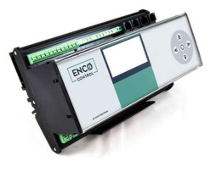SEC595: Applied Data Science and AI/Machine Learning for Cybersecurity Professionals


Experience SANS training through course previews.
Learn MoreLet us help.
Contact usBecome a member for instant access to our free resources.
Sign UpWe're here to help.
Contact UsFrostyGoop is the first reported ICS malware to successfully abuse ModbusTCP for control system manipulation and achieve real-world impact.


This blog was authored jointly by Tim Conway and Dean Parsons.
In the ever-evolving landscape of cybersecurity threats, a new industrial control systems (ICS) malware, named FrostyGoop, has emerged, posing significant risks to critical infrastructure. FrostyGoop is specifically designed to target control systems that utilize ModbusTCP communications, a common industrial protocol. This makes the FrostyGoop attack a significant threat to ICS sectors worldwide, such as energy, water and wastewater, manufacturing, transportation, oil and gas, and other critical sectors.
Historically, ICS attacks like PIPEDREAM in 2022 have utilized the industrial ModbusTCP protocol for discovery and enumeration. Similarly, the VPNFilter campaign, reported by the Ukrainian SBU Security Service in 2018, had Modbus capabilities but were reportedly deterred at the LLC Aulska chlorine station in the city of Auly, which supplies water treatment and sewage plants in Ukraine.
However, FrostyGoop is the first reported ICS malware to successfully abuse ModbusTCP for control system manipulation and achieve real-world impact.
ModbusTCP is an ICS protocol widely used for its interoperability, extensive support, and flexibility, and is found in many control system networks worldwide. In ICS environments, ModbusTCP is commonly used as the industrial protocol of choice, enabling process communication between various devices such as programmable logic controllers (PLCs), sensors, and actuators.
Like many other Industrial protocols, Modbus is typically implemented in a manner that is unencrypted and unauthenticated. Attackers with access to the control system network can take advantage of this operations-focused design approach, using the supported protocols to discover important information about the process and send commands directly to controllers. Adversaries wishing to misuse supported industrial protocols within a targeted process typically pursue communication access to the environment through trusted remote access, perimeter vulnerabilities, supply chain attacks, communication gateways, and broad attack campaigns targeting the organization. They establish a foothold and utilize living off the land techniques.
Adversaries reportedly used FrostyGoop in a cyber-attack against a Ukrainian municipal district energy company, resulting in a two-day heating system service disruption to over 600 apartment buildings in Ukraine. Adversaries injected unauthorized ModbusTCP commands in the victim networks, targeting ENCO controllers used for heating controls. This caused system malfunctions and inaccurate heating system measurements, leading to a loss of heat for civilians during sub-zero temperatures in January 2024. The recovery and restoration took approximately two days.
The incident response investigation indicated that adversaries likely obtained a foothold into the victim network through an external facing router. With minimal segmentation in the targeted environment, the adversaries were able to obtain user credentials from the system and established a Layer 2 tunnel into the target network. This remote access allowed them to send control system commands directly to ICS devices. By issuing unauthorized Modbus commands directly from the attacker environment, they eliminated the need to place the malware on assets within the targeted network, thus avoiding future discovery, analysis, and forensics. Additionally, this attack approach limits the benefits of host-based detection and preventive defenses.

FrostyGoop is a compiled Windows operating system binary that was not detected as malicious by antivirus vendors at the time of discovery. This malware is engineered to leverage Windows ICS assets that interface with ENCO controllers using ModbusTCP. It uses ModbusTCP over TCP port 502 to read from and write to control system devices holding registers to cause process effects.
It is important to note that FrostyGoop’s functionality is not specific to ENCO controllers. It can be used to attack other ModbusTCP-enabled devices, regardless of sector. FrostyGoop can utilize different attack configuration files, allowing it to target multiple ModbusTCP devices based on IP address. Additionally, it can interface with devices based on a set time and delay between ModbusTCP commands.

In the reported attacks against the municipal district energy company, it can be seen that common attack vectors providing access into control system networks include internet-connected infrastructure devices. As this was the reported attack vector in the attacks utilizing FrostyGoop, it is certainly worth highlighting the importance of secure remote access and defensible network architectures as a key line of defense in protecting process environments from such attack approaches. It was also reported that in 2023, nearly 40% of compromises to ICS/OT environments originated from IT networks that allowed threats into the ICS network.
Given the reported attack approach, it is important to consider operational technology (OT) network visibility as a detective control, along with preventative controls, to quickly identify and mitigate this type of adversary activity. The Dragos reporting on FrostyGoop provided perspectives on recommended mitigations with references to the five ICS cybersecurity critical controls. Here are additional thoughts on the ICS critical controls pertaining to this event:

FrostyGoop represents another reported attack leveraging ICS-enabled malware targeting a cyber-physical environment. Its ability to directly interact with ICS devices using widely adopted protocols like ModbusTCP highlights the need for enhanced cybersecurity measures.
These “living off the land” types of attacks, along with attacks on the ICS network perimeters, are likely to increase significantly into the future. Traditional endpoint security tools often cannot detect or mitigate such attack techniques.
Critical Infrastructure facilities are urged to consider implementing the Five ICS Cybersecurity Critical Controls, with an initial focus on perimeter defenses. By prioritizing these critical controls, including network segmentation and a robust ICS-specific monitoring program, facilities worldwide can better defend against this and similar threats against critical infrastructure into the future.
Tim serves as the Technical Director of ICS and SCADA programs at SANS, where he is responsible for developing, reviewing, and implementing technical components of SANS ICS and SCADA product offerings. A recognized leader in CIP operations, he formerly served as the Director of CIP Compliance and Operations Technology at Northern Indiana Public Service Company (NIPSCO). In this role, he was responsible for Operations Technology, NERC CIP Compliance, and the NERC training environments for the operations departments within NIPSCO Electric. Recognizing the need for ICS-focused cybersecurity training throughout critical infrastructure environments and increased demand for hands-on NERC CIP training, Tim authored and instructs the ICS curriculum’s ICS456: Essentials for NERC Critical Infrastructure Protection course, as well as the ICS612: ICS Cybersecurity In-Depth course. Outside of SANS, Tim continues to perform contract and consulting work in ICS cyber security, focusing on the energy sector.
Dean Parsons is the CEO of ICS Defense Force, bringing over 20 years of technical and management experience to the classroom. He has worked in both Information Technology and Industrial Control System (ICS) Cyber Defense in critical infrastructure sectors such as telecommunications; electricity generation, transmission, and distribution; and oil and gas refineries, storage, and distribution. Dean is an ambassador for defending industrial systems and an advocate for the safety, reliability, and cyber protection of critical infrastructure.
As a SANS Certified Instructor, Dean teaches ICS515: ICS Visibility, Detection, and Response and co-authored the new SANS course ICS418: ICS Security Essentials for Managers. He is a member of the SANS GIAC Advisory Board and holds numerous cybersecurity professional certifications, including the GICSP, GRID, GSLC, and GCIA, and CISSP®, and a B.S. in Computer Science.


Dean Parsons, CEO of ICS Defense Force, teaches ICS515 and co-authors ICS418, emphasizing ICS-specific detection, incident response, and security programs that support OT operations—aligning practitioners and leaders on clear, defensible action.
Read more about Dean Parsons